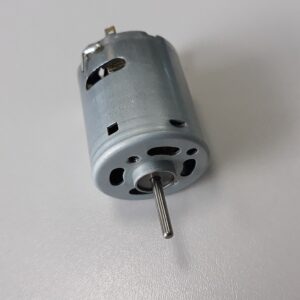The ODP (Open Drip Proof) motor is a type of electric motor commonly used in a variety of industrial applications.
One of the critical components of any motor is its cooling system, which is designed to dissipate heat generated by the motor’s operation.
In this article, we will explore how the cooling system in an ODP motor works and why it is essential for its reliable and efficient operation.
Table of Contents
The Basics of ODP Motors

Before we dive into the cooling system, let’s briefly review the basic features of an ODP motor.
As the name suggests, an ODP motor has an open enclosure that allows air to circulate freely around the motor’s components.
The motor’s stator and rotor are located inside the enclosure, while the drive shaft protrudes through the end shield.
One of the advantages of an ODP motor is that it is relatively simple and cost-effective to manufacture.
The open enclosure makes it easier to access and maintain the motor’s components, while the absence of a fan or other complicated cooling components simplifies the design.
The Need for Cooling
However, despite its simplicity, an ODP motor still generates a significant amount of heat during operation.
The resistance of the motor’s windings and the friction between its moving parts can cause temperatures to rise rapidly, especially in high-power applications.
If this heat is not dissipated efficiently, it can damage the motor’s insulation, bearings, and other critical components, leading to premature failure.
That’s where the cooling system comes in. The cooling system in an ODP motor is designed to remove heat from the motor’s components and dissipate it into the surrounding air. Let’s take a closer look at how this process works.
The Cooling System
The cooling system in an ODP motor relies on two main components: the frame and the fins.
- The frame is the outer housing of the motor, which provides a large surface area for heat to be dissipated.
- The fins are thin metal strips that protrude from the frame, increasing its surface area and promoting airflow.
As the motor operates, heat is generated in the windings and other components. This heat is conducted to the frame, which absorbs it and begins to radiate it out into the surrounding air.
The fins on the frame increase the surface area, allowing more heat to be dissipated and promoting more airflow around the motor.
In addition to the frame and fins, the ODP motor’s cooling system also relies on the natural convection of air.
As the air around the motor heats up, it rises and is replaced by cooler air from below, creating a natural flow of air around the motor. This flow of air carries heat away from the motor and helps to keep it cool.
Do ODP Motors Have Fans?
No, ODP motors do not have fans. The cooling system in an ODP motor relies on natural convection and the motor’s frame and fins to dissipate heat, rather than using a fan or other active cooling component.
This makes the ODP motor a simple and cost-effective option for many industrial applications, but it also means that it may not be the best choice for applications where high levels of cooling are required.
In those cases, a motor with an enclosed or totally enclosed fan-cooled (TEFC) design may be a better option.
Impact of Cooling System on ODP Motor Performance
The cooling system is a critical component of any electric motor, including ODP motors. A well-designed cooling system helps to dissipate heat generated by the motor’s operation and maintain the motor’s temperature within safe limits.
This, in turn, can have a significant impact on the motor’s performance and longevity.
Mechanics of ODP Motor Cooling System
As mentioned earlier, the cooling system in an ODP motor relies on the motor’s frame and fins to dissipate heat and natural convection to move the heat away from the motor.
The frame of an ODP motor provides a large surface area for heat to be dissipated, and the fins increase the surface area, allowing more heat to be dissipated and promoting more airflow.
As the motor operates, heat is generated in the windings and other components, which is conducted to the frame.
The frame absorbs the heat and begins to radiate it out into the surrounding air. The natural convection of air moves the heat away from the motor, carrying it out into the environment.
Impact of Cooling System on Motor Performance
The performance of an ODP motor is directly impacted by its cooling system. If the cooling system is not designed or maintained correctly, the motor may overheat, leading to reduced efficiency, increased wear and tear, and premature failure.
Overheating can cause damage to the motor’s insulation, bearings, and other critical components, resulting in costly repairs or replacement.
On the other hand, a well-designed and maintained cooling system can help to maximize the motor’s performance and lifespan.
By dissipating heat efficiently, the motor can run cooler and more reliably, reducing the risk of damage to its components.
This, in turn, can lead to increased efficiency, reduced downtime, and lower operating costs over the motor’s lifespan.
Want to learn more? Click here to explore our in-depth article about ODP motor failure.
Conclusion
In summary, the cooling system in an ODP motor is a critical component that helps to prevent overheating and ensure reliable and efficient operation.
By using the motor’s frame and fins to increase the surface area and promote airflow, and by relying on natural convection to move heat away from the motor, the cooling system helps to dissipate heat and keep the motor running smoothly.
If you are using ODP motors in your industrial applications, it’s essential to understand how the cooling system works and to ensure that it is properly maintained to maximize the motor’s lifespan and performance.



